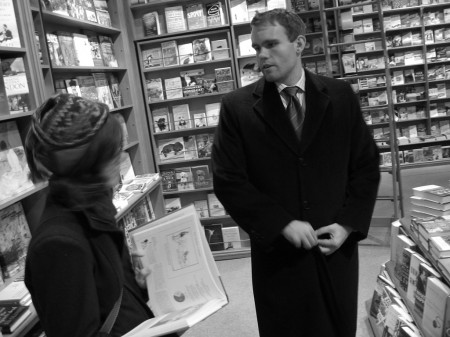
Paul Stamets’ Mycelium Running: How Mushrooms Can Help Save the World is an informative text, written by a true believer. While it contains a lot of practical information, the author’s unbridled enthusiasm sometimes makes you doubt how valid the more fantastic claims are. That being said, it certainly provides some concrete and believable examples of situations where the strategic use of fungi can have beneficial health and environmental effects.
After providing some basic information about the biology of fungi, Stamets covers four different kinds of ‘mycorestoration.’ He shows how patches of mycelium (the tangled, stringy mass that makes up the bulk of fungi) can be used to filter water flowing through – an application that might have particular value downslope from farm animals. The section on mycoforestry shows how mushrooms can accelerate the breakdown of debris from logging, allowing nutrients to return to the soil. It also addresses the ways in which mycorrhizal fungi on the roots of plants can enhance their growth and health. In a section on mycoremediation, Stamets highlights the ability of different fungi to digest or absorb toxic materials ranging from crude oil to nerve gas to radioactive strontium. Finally, a section on mycopesticides describes ways in which insect-attacking fungi can be used to prevent and cure insect infestations.
In addition to the sections outlining the potential of fungi in general, the book includes a lot of practical information about different types of mushrooms, their uses, and how to grow them. It covers different ways of going from spores to a mushroom patch, at scales ranging from a small garden installation to the very large scale. The last hundred pages is a species-by-species catalogue of different mushrooms: how they look, how to grow them, nutritional information, etc. The assertions about mushrooms having intelligence (partly on the basis of mycelium looking like neurons in a brain), I definitely have my doubts about. The step-by-step instructions on producing mushroom patches, I have no doubt could be invaluable to someone wishing to put fungal theory into practice.
Fungi are probably the class of organisms least well understood by most people, and it is rewarding to gain a deeper understanding of the roles they play in ecosystems. More information can be found on Stamets’ website, which also sells various types of mushroom kit and spawn.






